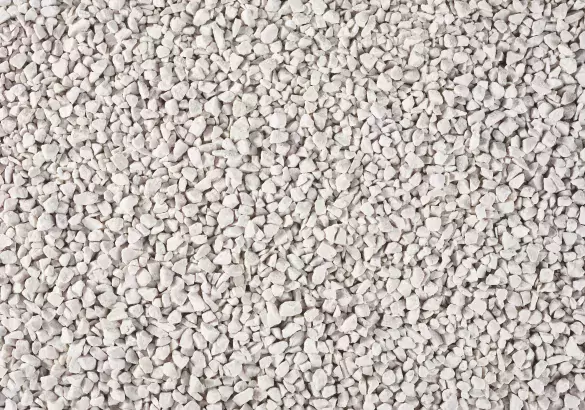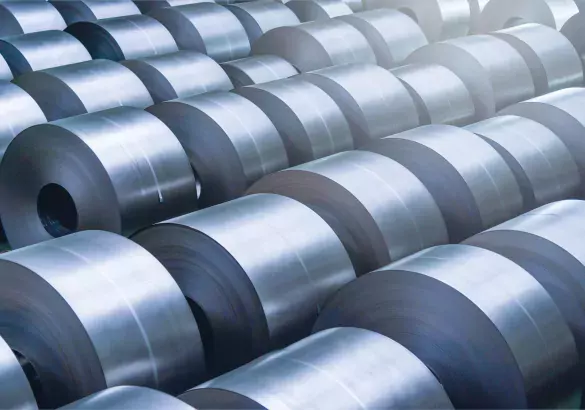Other non-ferrous market applications
Other applications
In addition to the main non-ferrous market applications (copper, gold, alumina and lithium), lime / quicklime is also used in a wide range of other applications related to the mining and extractive metallurgy industries.

Nickel and cobalt recovery
Nickel is a key metal used in stainless steel production. Nickel and cobalt are also critical metals used in cathode active materials (CAM) of rechargeable batteries. Hydrometallurgical processing is used to recover nickel and cobalt from a range of ore types, including sulphides and laterites (including both limonite and saprolite ores).
These hydrometallurgical processes result in acid-solubilization of impurity elements, such as iron, aluminium, manganese and magnesium, in addition to valuable nickel and cobalt. Limestone and quicklime/lime are used to precipitate these impurities from solution.
Arsenic treatment
Arsenic is a significant and hazardous impurity associated with many copper and refractory gold ores, as enargite and arsenopyrite minerals. Often present in acid process solutions, it must be removed in a stable solid form. The conversion of soluble arsenic into precipitated scorodite, FeAsO4.2H2O, is considered the most suitable treatment option.
Lime facilitates the production of scorodite by increasing the pH (3-4) of the acid solution to facilitate ferrous iron oxidation by aeration. The resulting iron oxidation enables iron and arsenic removal in scorodite precipitation. In some instances, arsenic is directly precipitated at pH 11 using lime to form calcium arsenate or calcium arsenite.
Transportable moisture limit (TML)
Mineral products, such as iron ore and other mineral concentrates, need to comply with tightly regulated transportable moisture limits (TML) that apply to bulk shipping. Too little moisture results in dusting problems. Too much may result in fluidization of the material, with possibly disastrous consequences for bulk cargo ships. Quicklime, CaO, reacts with free water to form calcium hydroxide, thereby reducing the moisture content of the mineral products.
Wet sticky ore treatment
Some ores are prone to becoming “sticky” when exposed to rainfall prior to being transported and handled. This phenomenon causes significant bulk material handling difficulties and can be problematic for operations.
Quicklime, CaO, alleviates this problem by combining the following mechanisms: (1) reducing the water content by hydration reaction, (2) reducing water content by increasing the temperature through the exothermic reaction with water, thus increasing evaporation, (3) and reacting with clays to reduce sticky behaviour.
Mineral concentrate odour treatment
Odour control is important during storage, transport and handling of base metal sulphide mineral concentrates. Organic flotation collectors, such as xanthates, are retained in mineral concentrates. Under certain circumstances, these organic compounds may decompose during stockpiling, transport and handling of mineral concentrates.
Decomposition products include gaseous organosulfur compounds that produce significant odours. This could cause regulatory authorities to restrict the transportation of these concentrates. Using lime products in the final solid-liquid separation step of concentrate production can significantly reduce odours associated with mineral concentrates.
Coal dust explosion prevention
Milled limestone is used in underground coal mining to prevent and suppress coal dust explosions. It is typically sprayed on mine walls, where it acts as a coal dust binder, preventing the dust from becoming airborne and contributing to the risk of explosion. In addition, bags of limestone are stored at strategic locations in the mine. In the event of an explosion, they also explode. The resulting limestone dust dilutes the coal dust concentration, reducing its explosive impact and combustion potential.
Magnesium removal during potassium processing
Potassium mining and flotation recovery often results in a sodium chloride solution side-stream from which high purity NaCl can be recovered as a by-product. Lime is used to remove soluble MgCl from this side-stream to ensure high purity NaCl production.
Acid Mine Drainage (AMD) or Acid Rock Drainage (ARD)
Acid mine drainage, also called acid rock drainage, often results from historic mining and mining waste materials. This occurs when exposed sulphide minerals are oxidized to generate sulphuric acid that, in turn, causes metal dissolution. The resulting metal-containing acid solution can be treated, using limestone and lime, to neutralize acidity and precipitate metals. Such treatments are used to prevent environmental contamination of groundwater and open water sources.
Fluxing agents for smelting and refining
Lime is used as a fluxing agent in copper, nickel, aluminium and magnesium refining and smelting, as well as for related applications.
Copper and nickel smelting/refining
- Lime versus limestone as a fluxing agent - lime is stable at high temperatures and requires no energy input, unlike limestone, which removes energy that must be replaced.
- Arsenic removal - lime is used for arsenic removal from copper in converters and anode furnaces, and for arsenic precipitation from roaster acid-recovery reject streams.
- Gas scrubbing - lime is used as a scrubbing reagent to treat flux gases emanating from base metal tapping operations.
- Dust capturing - simplifying the filtration of captured dust and helping to prevent mud formation in bag filters that contain air moisture.












